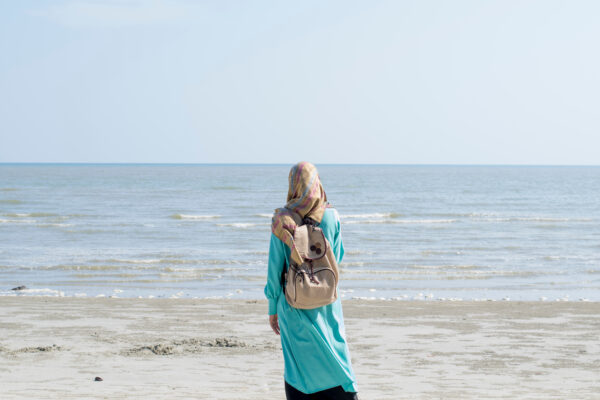The Hajar Paradigm examines the lived realities of Muslim women, particularly Black Muslim women in America, compared with the idealized religious understandings of family structure and gender roles.
The Hajar Paradigm examines the lived realities of Muslim women, particularly Black Muslim women in America, compared with the idealized religious understandings of family structure and gender roles.
What happens when a woman “is isolated from the network which had carried the promise of provision, protection, and care?” How many of our Muslimahs today find themselves in similar situations and must transition into the role of sole provider/head of household and “fend for herself or her offspring with no infrastructure or support?” These are some of the questions offered by Dr. Amina Wadud in a lecture at Columbia University in 1998, wherein she introduced the “Hajar Paradigm”.
What is the Hajar Paradigm?
The Hajar Paradigm examines the lived realities of Muslim women, particularly Black Muslim women in America, compared with the idealized religious understandings of family structure and gender roles.
Dr. Wadud stressed the contextualization of Islamic history and Prophetic biography (sira) to remind us that the definition of a family then (i.e., extended family) does not neatly translate to our modern urban realities (nuclear family). She challenged the audience to shift their focus from the rosy description of what Muslim women should represent to their lived realities: Muslim communities in America do not do everything they can or should do to support women and preserve families (even if the family isn’t a “nuclear” one), though these communities may claim that they are upholding the Sunnah. Dr. Wadud stated,
We are at this place of not focusing on the reality of what it takes for women to do the types of things that are expected of them. And in addition, if the extended family is gone and the nuclear family has taken over, what happens if for some reason in that nuclear family that the woman is left alone?
The archetype for Muslim women
Dr. Wadud posited that we should examine Hajar as the archetype for the Muslim woman of today more so than the romanticized image of women in Islamic history, specifically the sira. Her narrative should be discussed as a viable standard on its own accord, not just in juxtaposition to Prophet Ibrahim’s narrative in the Qur’an and narrations of the Prophet Muhammad (peace be upon them). The in-depth look at Hajar’s relationship with Ibrahim (peace be upon them) and the Islamic legal and spiritual implications of the events of her story would better prepare women for the possibility of assuming the sole role of being head of household, “running between two hills” as Hajar had.
If Islam is [meant] for all places and for all times and for all people, the reality of this must be dealt with. Yet the ideals that families should produce, in terms of well-being, are presumed to remain unencumbered by global or regional realities. In the case of Islam in America, and especially in the case of the convert community, we expect the best and are offered [the] least.
We are offering no genuine consideration for the numbers of women who raise children single-handedly in non-Muslim and un-Islamic environments. Should any shortcomings befall such families, we do not address it as a matter of community responsibility because we can hide behind the rhetoric that Islam gave women their rights almost fourteen centuries ago.
What does “new Hajar” aim to accomplish?
The “new Hajar” in the United States contends with the intersecting expectations of obtaining material livelihood, from paying the rent to medical expenses to putting food on the table and everything in between, for her children and nurturing their educational, emotional and spiritual growth, all the while attempting to provide the same for herself. All of these challenges occur in a public arena where the male experience is still the standard, where poverty and classism restrict movement and cultural views on “single working moms” are largely pejorative and otherized. Some of these expectations are discussed at-length by Islamic legal interpreters and others not at all, leaving many Muslim women in the United States without recourse in Islamic Law and left to their own devices due to loopholes and community blindness.
Hajar’s life is so close to what women actually experience when they find themselves without the essential legal and social protections, that are meant to be guaranteed by Divine Law, by way of removal of spouses, either natural (i.e., death) or willful (i.e., divorce, abandonment, or domestic abuse). Hajar’s experience is arguably the rule and not the exception, especially when we consider the high rates of divorce, domestic violence and abuse, and gendered oppression.
To listen to the entire lecture, visit Umi’s Archive for the audio posting and more interesting resources.
by Kimberly Harper & Ryan Hilliard
This article was originally published here by our friends at Sapelo Square.





